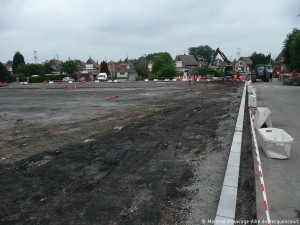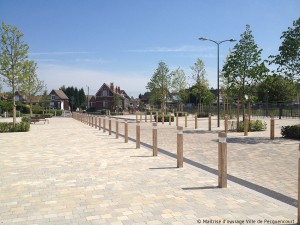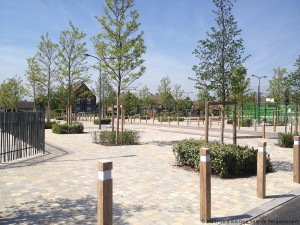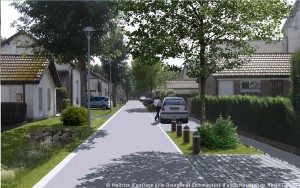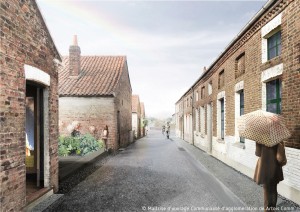Benefits to boost lifestyle
Being listed as World Heritage paves the way to large-scale modernisation of the miners’ housing developments and environment.
The housing is being made comfortable and luminous, with insulation and restored façades, catering better to current and future lifestyles, all in an environment leaving plenty of room for green spaces and venues for community gatherings. The first “World Heritage” project districts are due for completion by 2017. Surprisingly, these five “pilot-housing developments” are not green-field constructions. They are actually miners’ housing developments that were built over a century ago, now refurbished in exemplary fashion. Ambitious modernisation for which €33 million have already been allocated and which would not have been possible without the World Heritage listing. Indeed, the huge inventory and analysis embarked on in 2002 to put together the candidature heralded a change of viewpoint regarding the mining districts. It showed that the 563 miners’ housing developments (of which 124 were finally included in the scope of the sites listed as World Heritage) featured much more varied and diverse architecture than was previously supposed. And that their layout as detached houses around community facilities met a need for “community life”, lacking in more recent, uniformly anonymous dormitory apartment blocks. It had been forgotten, yet these old buildings were avant-garde at the time.
The listed Pecquencourt housing development was included in Anru 1, the first national urban renewal programme (2004-2014). In Anru 2 announced in late 2014, the 12/14 housing development in Lens was included among the 25 priority districts nationwide. This large-scale operation is to renovate and preserve this estate for 4,000 inhabitants as well as others among the 124 miners’ housing developments listed as UNESCO World Heritage.
Being listed as World Heritage in 2012 has raised awareness among housing development inhabitants, owners (the two social housing lessors “Maisons et Cités” and “SIA”) and local elected representatives that their outstanding heritage was to be cherished and leveraged. That the miners’ housing developments could become attractive. That now brownfields could be used for extra housing without encroaching on farmland. That the former railway lines were ideal for eco-friendly routes for cyclists and hikers. That the spoil heaps had potential as natural leisure parks. That what had previously been seen as the sequels to intensive, non-sustainable exploitation could be harnessed to improve living conditions. And the mining page could be turned without ripping it out.
The five housing developments were selected in 2008 for their future, exemplary layout and how their renovation was managed. By bringing together the lessors, town councils, inter-municipality organisations, General and Regional Councils and the state, the renovation plan included from the outset all that was needed for a district to function properly: links with the rest of the town and other projects for neighbouring district, community facilities etc. While the intention is not to duplicate these pilot housing developments throughout the Mining Basin, they must serve as a model for future city planning (it has already been the case for Valenciennes Métropole since 2014). So that in the long-term, it becomes a knee-jerk reflex to make improvements to the living conditions of inhabitants of a territory listed as World Heritage, a showcase for future generations.



